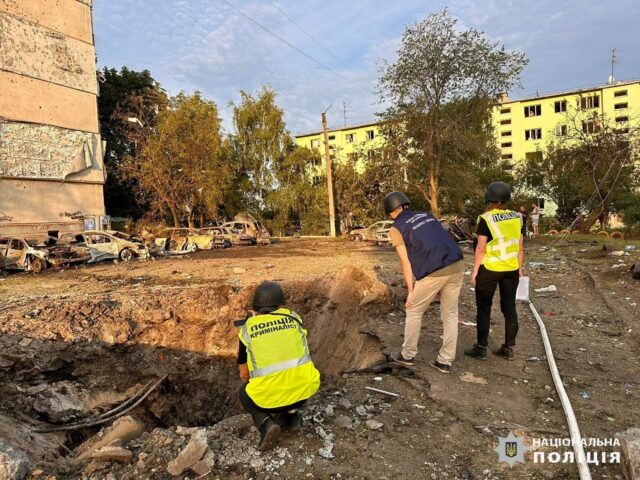Missile Attack in Chuhuiv: Devastation and Its Human Cost
This morning, the city of Chuhuiv found itself under siege as military forces launched a missile attack using two Iskander missiles. The impacts were catastrophic, leaving a trail of destruction and suffering in their wake. Reports from local police in the Kharkiv region reveal that the first missile struck dangerously close to a residential building, creating a massive crater roughly 4.7 by 4.5 meters and plunging to a depth of 3.2 meters. The second missile followed suit, hitting near another building and creating a crater measuring 3.5 by 4 meters and 1.7 meters deep.
The chaos resulted in nine people injured, among whom was a 14-year-old boy, now hospitalized in critical condition. Furthermore, the attack led to ten vehicles being engulfed in flames, destroyed beyond recognition, as well as damaging numerous homes, shops, and administrative buildings, forcing families and businesses to confront the harsh realities of war.
The Human Toll of Conflict: A Closer Look
The impact of the missile strikes goes beyond physical damage; it reverberates through the lives of the affected individuals and families. Imagine a typical morning where families are just starting their day, only to be abruptly interrupted by the terrifying sound of missiles. Local communities, already beleaguered by ongoing conflict, are left to pick up the pieces after such devastating attacks.
- Critical Injuries: Nine people were reported injured, including children—innocent victims caught in the crossfire.
- Destruction of Property: Ten vehicles were completely destroyed, along with significant damage to homes and local businesses.
- Long-term Consequences: This strikes not only lead to immediate injuries and damage but also instill fear and trauma in the community, impacting mental health for years to come.
As forensic experts, investigators, and explosives specialists rush to the scene to gather evidence, a criminal investigation has been initiated regarding potential violations of international laws of warfare. This ongoing inquiry is essential not only for accountability but also for establishing a precedent that could deter future attacks on civilians.
The Bigger Picture: What Does This Mean for Local Civilians?
This incident starkly highlights the precarious security situation in the region, where civilians bear the brunt of military hostilities. According to recent studies, approximately 70% of the casualties in modern conflicts are non-combatants, showcasing the increasing vulnerability of innocent lives in war zones. Furthermore, the United Nations reports that over half of the population in war-torn regions faces food insecurity, exacerbated by such violent outbreaks.
As the situation evolves, efforts must be made to support the injured and provide necessary humanitarian aid. Additionally, it’s critical to develop strategies focused on conflict resolution to prevent future tragedies. The scars of conflict run deep, and the need for advocacy, peace-building initiatives, and community support has never been more urgent.
In conclusion, the missile strike on Chuhuiv serves as a painful reminder of the human cost of war. It remains essential to keep the dialogue open regarding accountability and proactive measures to protect vulnerable populations caught in the crossfire. As we look ahead, it is our collective responsibility to ensure that the voices of those affected are heard and that lasting solutions are sought to end the suffering.





